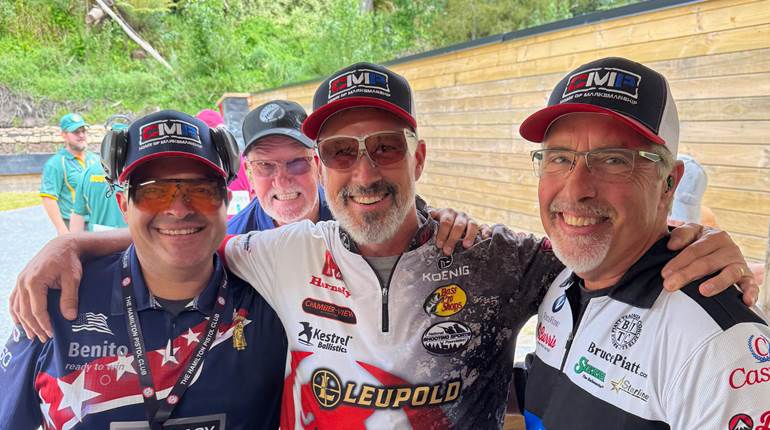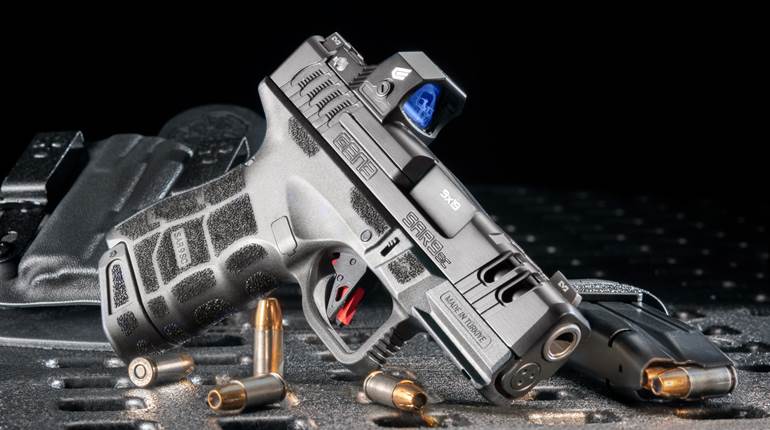When it comes to .223 Rem. semi-automatic rifles, Ruger’s Mini-14 has long been one of the obvious choices. And it’s no wonder, considering it offers nearly the same handiness as the M1 Carbine, the ballistics of the AR15, and the feel of the classic M1 Garand and M14. The Mini’s popularity confirms its strong perceived relevance among a wide range of users, and sustained sales for more than 40 years is evidence of its sound design—even if it’s unfairly judged by the same criteria as today’s predominant platform, the AR, which enjoys the huge advantages of U.S. military adoption and unlimited manufacturing sources. So while some consider the Mini a bit dowdy or lowly, it is actually a serious standout worth giving a second look. Here are just five of the many reasons why a Mini Ranch, Tactical, Target or Thirty model should be on your short list the next time you shop for a modern rifle:
1. The AR may not be right for you.
As difficult as it may be for some to believe, not everyone finds the AR platform appealing. There are a number of reasons why, but two come quickly to mind. The first is that its appearance may be too "tactical" for some people's tastes; aesthetics can be subjective. And the second is that its controls may not be intuitive for some users because of their physical makeup and/or lack of prior training. In contrast to the former, most versions of the Mini have a sporter-like profile and some feature wood stocks, making them right at home in saddle scabbards, pickup trucks and, more importantly, in the minds of many for whom the sight of a traditional rifle is less likely to arouse unwanted attention. As to the latter, the Mini’s centrally located safety, its hook-rock-and-lock magazine design, and its beefy, integral charging handle make for a straightforward manual of arms with the respective benefits of rapid employment, secure loading and positive chambering. Add to these factors the Mini’s light overall weight (6 lbs., 12 ozs.) and handiness (36¾"), and you have a combination of qualities that is difficult to ignore.
2. The latest Minis are more accurate.
The Mini has long suffered from a reputation among many users for poor accuracy. Theories abound as to why that is the case: My own is that the considerable mass of the operating slide impacts harshly against the gas block, which is bolted directly to the relatively thin barrel, not allowing the barrel to return to its precise point of rest between shots. But in 2005, Ruger retooled the Mini-14 production line and most shooters agree that, beginning with the 580-prefix series guns made since then, shooting 2" groups at 100 yds. is not out of the question. Again, it may come as a surprise to some, but not everyone needs a half-m.o.a.-capable rifle. Many tasks just don’t require that level of accuracy. In fact, most hunting and self-defense situations are in that category. Also, my experience is that accuracy and reliability in semi-automatic rifle actions is usually inversely proportional. So, anything that the Mini lacks in the way of accuracy is, practically speaking, likely more than made up for in reliability and cleanliness of operation and in lack of ammunition sensitivity.
3. The Mini is one of few semi-auto .223s available in stainless steel.
For boaters, coastal dwellers and others for whom corrosion is an issue, the Mini is one of the few factory semi-auto rifles available in stainless steel, which can greatly reduce the necessity for fastidious, immediate maintenance. Because of their simple fixed-gas-piston system and Garand-style rotating bolt with two large locking lugs, Minis are generally not maintenance-sensitive anyway, but when it comes to harsh environments, particularly, the advantages of keeping stainless steel free of corrosion are undeniable—especially when gun maintenance cannot be performed as regularly as it should. Note that, with the Mini, stainless construction means that the barrel, receiver, bolt, operating rod, trigger group and many other small parts are stainless steel. Blued guns, of course, use chrome moly steels in many of those same large components, but even in those guns, many of the smaller components are made of stainless. The broader point, of course, is that the Mini is made largely of steel—not polymers or aluminum—and steel’s material properties lend it a durability and longevity that lighter weight materials simply cannot match.
4. Twenty- and 30-round factory magazines are widely available and reasonably priced.
This had been a longstanding bugaboo that plagued the Mini-14’s reputation. Ruger has produced 20- and 30-round magazines since the gun’s earliest days, but, until just a few years ago, it sold the latter only through law enforcement channels. That spurred the production of a raft of inferior aftermarket magazines, which did nothing to bolster the Mini’s otherwise enviable reputation for reliability. Nowadays, factory-fresh, Ruger steel magazines—a durable design that has functioned virtually flawlessly since its inception—are available for sale in the usual commercial channels at reasonable prices. In addition, flush-fitting five-round magazines are also available. All feature a projection on the follower that activates the gun’s bolt hold-open once the last round has been fired. (The hold-open can also be manually activated by way of a button atop the receiver rather easily.)
5. It’s now available in .300 Blackout.
Just recently, Ruger announced that it is offering the Mini in .300 Blackout, which should make an already proven platform even more appealing and versatile—especially for those who would like to hunt with a Mini in areas that require a caliber greater than that of the .223 Rem. Of course the Mini has been available in 7.62x39 mm for years as the Mini Thirty, albeit limited to 20-round factory magazines, but the new .300 Blackout Mini brings .30-cal. presence to the familiar platform with the advantage of feeding from the same .223-cal. 20- and 30-round magazines that are now so widely available. Ruger is selling the gun with a magazine marked "300 AAC Blackout" simply as a precaution, but there is reportedly no difference mechanically between it and the .223 magazine. It makes one wonder if the smart move might be to buy two Minis, a .223 Rem. and a .300 Blackout, along with a raft of magazines to fit either interchangeably as a practical, powerful hedge against bad times.











![Auto[47]](/media/121jogez/auto-47.jpg?anchor=center&mode=crop&width=770&height=430&rnd=134090788010670000&quality=60)
![Auto[47]](/media/121jogez/auto-47.jpg?anchor=center&mode=crop&width=150&height=150&rnd=134090788010670000&quality=60)












